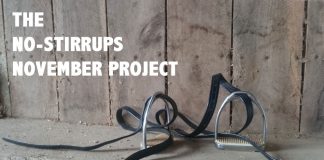 Dante, a 2-year-old Grevy’s zebra is prepared for colic surgery. |
On Aug. 27, Dr. Jennifer Brown, clinical assistant professor in emergency care and equine surgery at Virginia Tech’s Marion duPont Scott Equine Medical Center, was contacted by the Smithsonian National Zoological Park after Dante, a resident zebra at the Park, was discovered to have a life-threatening case of colic.
“Any time that one of these animals is sick, it is pretty challenging because, as prey animals, they tend to hide pain,” says Dr. Carlos Sanchez, associate veterinarian at the National Zoo. “Dante’s keepers said that he seemed really depressed. His coat was darker on one side suggesting that he had been lying down for an extended period of time during the night and he was just not acting like himself.”
A dart was used to anesthetize the zebra and a diagnostic examination for colic was performed.
“The main difference between zebras and domestic horses is that you can’t approach zebras without sedating or anesthetizing them because they are dangerous animals that can hurt you pretty badly,” Sanchez says. “We have to anesthetize them even to get a blood sample or heart rate, and, in this case, to perform a colic exam.”
Mineral oil was administered to Dante through a nasogastric tube and he was supported with intravenous fluids.
“We expected that the mineral oil and other treatments would do the job,” Sanchez says. “Dante was monitored closely for the remainder of the day and looked better but not as good as we would have expected so we started to consider surgical treatments. On Monday, we decided to contact the Equine Medical Center’s team about helping with the surgery, since they specialize in treating this type of condition.”
According to zoo officials, its highly trained veterinary staff is occasionally supplemented with outside experts.
When Brown received the call from Dr. Suzan Murray, chief veterinarian at National Zoo, she knew that the situation was dire.
“Dante was experiencing moderate colic,” Brown says. “Systemically he was stable, but it was a critical situation.”
“Although our faculty members primarily treat domesticated horses, they are fully equipped to treat all members of the Equidae family,” says Dr. Nat White, Jean Ellen Shehan professor and director of the Marion duPont Scott Equine Medical Center. “We treat donkeys and mules and the occasional exotic species.”
Zebras are members of the Equidae or equine family and therefore have digestive systems that are also susceptible to colic. Like a horse, a zebra’s digestive system consists of intestines that stretch from 11 to 12 times its body length, all of which can be easily affected by external factors including changes in diet or exercise. For Brown, who has performed hundreds of colic surgeries on horses, having a patient with stripes was highly unusual but technically very similar.
The 605-pound zebra was already under anesthesia, having been sedated by the zoo’s veterinarians before the Marion duPont Scott Equine Medical Center’s medical team arrived at the Smithsonian’s onsite veterinary hospital in the District of Columbia. “We use ultra-potent narcotics on zebras, the same ones used on rhinoceroses and elephants, because the animals are so hard to anesthetize,” Sanchez says.
“Once they covered his stripes up with my drape, I couldn’t tell the difference between him and a horse,” Brown says. “They have almost the same gastrointestinal tract, although colic is fairly uncommon among zebras.”
During the 90-minute procedure, Brown performed an exploratory laparotomy in order to confirm the colic diagnosis. A twist of the large colon was found to be the source of Dante’s illness. The twist was corrected and there was no significant damage to the intestines.
Brown was pleased with the outcome of the procedure and left the determination of a post-treatment regimen to the zoo’s veterinarians, who specialize in caring for wild animals.
“Zebras can not even be hooked up to an IV without anesthesia, so we left his recovery to the experts,” Brown says.
Following the surgery, Dante was kept at the zoo’s hospital in a padded stall, treated with antibiotics and pain medication, and gradually reintroduced to a normal diet. He was discharged approximately 10 days after the surgery.
“We didn’t have the luxury of checking the incisions in person once he was released from the hospital, but we took pictures with a zoom lens camera and could see that they healed well,” Sanchez says.
It has been two months since Dante was treated for colic and zoo officials report that, as part of the African Savannah Exhibit, he is once again greeting the more than two million visitors who flock to the park each year. Along with Gumu, a 4-year-old Grevy’s zebra stallion, Dante is part of a conservation effort managed by Species Survival Plans (SSPs), a cooperative breeding and conservation program for selected species in zoos and aquariums in North America. The National Zoo participates in the Grevy’s Zebra SSP by housing juvenile stallions until they are sexually mature (approximately 4 to 5 years of age). They are then sent to accredited organizations in North America that actively breed the species.
“Dante is a young zebra and very healthy,” Sanchez says. “He handled the surgery really well. The outcome was wonderful and we were grateful that everything went as planned.”






I think it is fantastic!!!!!!
I’m Glad it turned out so well.
I HAVE A 7 MONTH ZEBRA THAT WENT THOUGH COLIC SURGERY AT PURDUE 5 DAYS AGO HE IS DOING WELL HE IS TO COME HOME TOMMOROW. HE TWISTED HIS SMALL INTESTINES AND THEY HAD TO REMOVE 40% OF HIS INTESTINES. TEN DAI IS TAME AND WHEN THE VET FIRST CAME OUT HE WAS ABLE TO TUBE HIM. THEN WE TRANSPORTED HIM TO PURDUE FOR SURGERY.